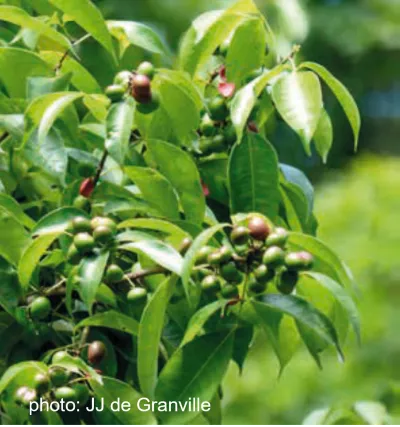General information
RDP Priority
- P2. Competitiveness
RDP Focus Area
- 4A: Biodiversity restoration, preservation & enhancement
RDP Measure
- M08: Investments in forest areas
Summary
In 2021, the Regional Forest Office of Guyana (France) used CAP funding to support its sustainable forest management plans and decision-making. The existing knowledge base needed to be updated to provide more accurate information about the forest, its plants, ponds, access routes and its commercial and ecological uses. The project funded the production of inventories to inform the designation of forest areas to be used by the timber industry, and subsequently to be replanted, to identify specific biospheres in need of protection and to specify ecological areas of interest. The identification of access routes was a further objective of the inventories to inform the building of new access paths to previously unsurveyed areas of the forest. The new, up-to-date inventories will help minimise any negative effects on the natural balance of the forest that might arise from its commercial use and to reduce human activities in general.
Results
- One inventory of the forest resources for an area spanning 51 000 hectares to define which part could be used for the timber sector and which areas should be protected.
- One inventory of the forest ponds across the same area.
- Through the inventories, the authority can now design the areas of specific natural or archaeological patrimony, confirm and utilise the potential offered by some trees, designate the areas for the timber industry and the areas in need of replanting.

Promoter
National Forest Office – Guyana Regional Office
Funding
Total budget 64 079 (EUR)
RDP support 23 295 (EUR)
Ressourcen
Documents
EU CAP Network - Good Practice - Promotion and resource knowledge collection in Guyana’s forests
(PDF – 531.04 KB)
Context
In 2021, the Regional Forest Office of Guyana (ONF – Guyana) was developing a new sustainable forest management plan and resource system. However, the knowledge about the existing forest resources and their uses needed to be updated because certain information gaps existed regarding the specific biodiversity aspects of the forest, type of plants, ponds and access routes. To fill these gaps, an inventory was needed before any detailed planning could commence to inform important decisions about which areas of the forest should be accessible for the timber industry and which areas should be protected from human access for ecological purposes. An inventory was also needed to provide essential information about new plants and their protection needs, for the creation of ecological sites of interest and to decide which parts of the forest needed replanting.
As part of the sustainable forest management plan and its wider aim of promoting and protecting forest resources in Guyana, this work was vitally important to ensure the resource availability and preservation of the local flora. CAP funding was sought to conduct the forest inventory and the forest pond inventory across an area of 51 000 ha in 2021.
Objectives
The overall aim of the study was to help inform the ONF to ensure that the forestry industry and human activity do not affect the natural balance of the forest.
In detail, the project had the following objectives:
- To accumulate data and knowledge on forest biodiversity, plants, trees and ponds across an area of 51 000 ha.
- To bring information from the regional forest authority up to date.
- To identify the potential for forest recovery and the need to replant trees (which species and where they should be replanted).
- To identify new areas of ecological interest that could be protected by a national or regional programme of nature preservation.
Activities
- Producing an inventory of forest resources to clarify which part of the forest could be used for the timber sector. The ONF worked on a specific area dedicated to the forestry industry and on areas that are still relatively unknown by the authorities. Other areas were not yet dedicated to any particular use, whether by the public or to be protected, such as areas of special ecological interest.
- Producing a cartographic inventory of the forest ponds.
Main results
The following results were achieved:
- One inventory of the forest resources for an area spanning 51 000 ha to define which part could be used for the timber sector and which areas should be protected. The inventory identified 90 species that could be used for the timber sector due to their abundance and their quality. The most used species is the Wapa tree (Eperua falcata).
- One inventory of the forest ponds across the same area.
- Through the inventories, the authority can now design the areas of specific natural or archaeological patrimony, confirm and utilise the potential offered by some trees, designate the areas for the timber industry and the areas that need to be replanted.
- The two inventories have also informed the creation of new access paths in the forest (spanning 60 km) and will also be used as a knowledge resource for future forest planning.
Key lessons and recommendations
- Accessibility to some forest areas can be challenging whereby some areas in the Guyana forest do not have any paths. This underlines the importance of the project work of informing and simultaneously building new access routes in relevant parts of the forest. The inventory work could thereby be extended to include areas that have so far remained unknown to the team.
“To preserve our forests, we have to identify the existing biodiversity and plants and to guarantee the forest will regenerate despite human activities. That’s why inventories are necessary.”
National Forest Office – Guyana Regional Office
